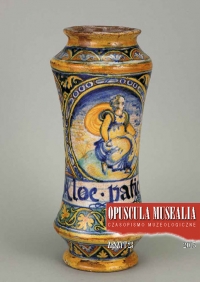Różnorodność artystyczna Jana Matejki na podstawie badań fizykochemicznych obrazów „Rejtan. Upadek Polski” (1866) i „Batory pod Pskowem” (1872)
Jan Matejko’s artistic diversity in light of physicochemical examination of paintings “Rejtan. The Fall of Poland” (1866) and “Bathory at Pskov” (1872)
Author(s): Sylwia Svorová Pawełkowicz, Karolina ZalewskaSubject(s): Museology & Heritage Studies, Visual Arts, 19th Century
Published by: Wydawnictwo Uniwersytetu Jagiellońskiego
Keywords: Jan Matejko, Rejtan; The Fall of Poland; Bathory at Pskov; canvas supports; pigments; painting binding media;
Summary/Abstract: The present paper covers results of physicochemical examination carried out in the course of conservation of two large-size paintings by Jan Matejko in the collection of the Royal Castle in Warsaw: Rejtan. The Fall of Poland (1866) and Bathory at Pskov (1872). The research programme encompassed the identification of both: original and secondary materials. The combination of the knowledge of history, conservation and painting methods, as well as traditional and modern research technologies (OM; SEM-EDS-WDS; μ-XRD, histochemical staining, FTIR, GC-MS), the painter’s technique was identified. A variety of materials used is fascinating. Looking at the paintings from the perspective of research results, they have not much in common, but undoubtedly are works by the same master. In his Rejtan, in which dark colour tones prevail, the artist applies thin layers of paint so the underpainting and diagonal weave of the canvas can be seen. As to Bathory, in which bright colours are dominant, painting layers are thick and impasto used. Both paintings perfectly illustrate Matejko’s artistic path: in Rejtan he faithfully follows the rules he learned at school, whilst in Bathory he reaches for methods of previously banned painting methods and creates his own style of painting. Comparative analysis of both paintings shows the picture of Jan Matejko as a very conscious artist. Beginning his work at the painting, the artist used to plan every step – not only composition and ideological message, but also, apparently, the choice of materials. Nothing is accidental, neither the type of canvas, nor the choice of pigments or the binding media. It does not go in line with the romantic image of the artist, who creates in a surge of elation, but it fully shows the master’s perfect command of his skills.
Journal: Opuscula Musealia
- Issue Year: 2015
- Issue No: 23
- Page Range: 121-131
- Page Count: 11
- Language: Polish

